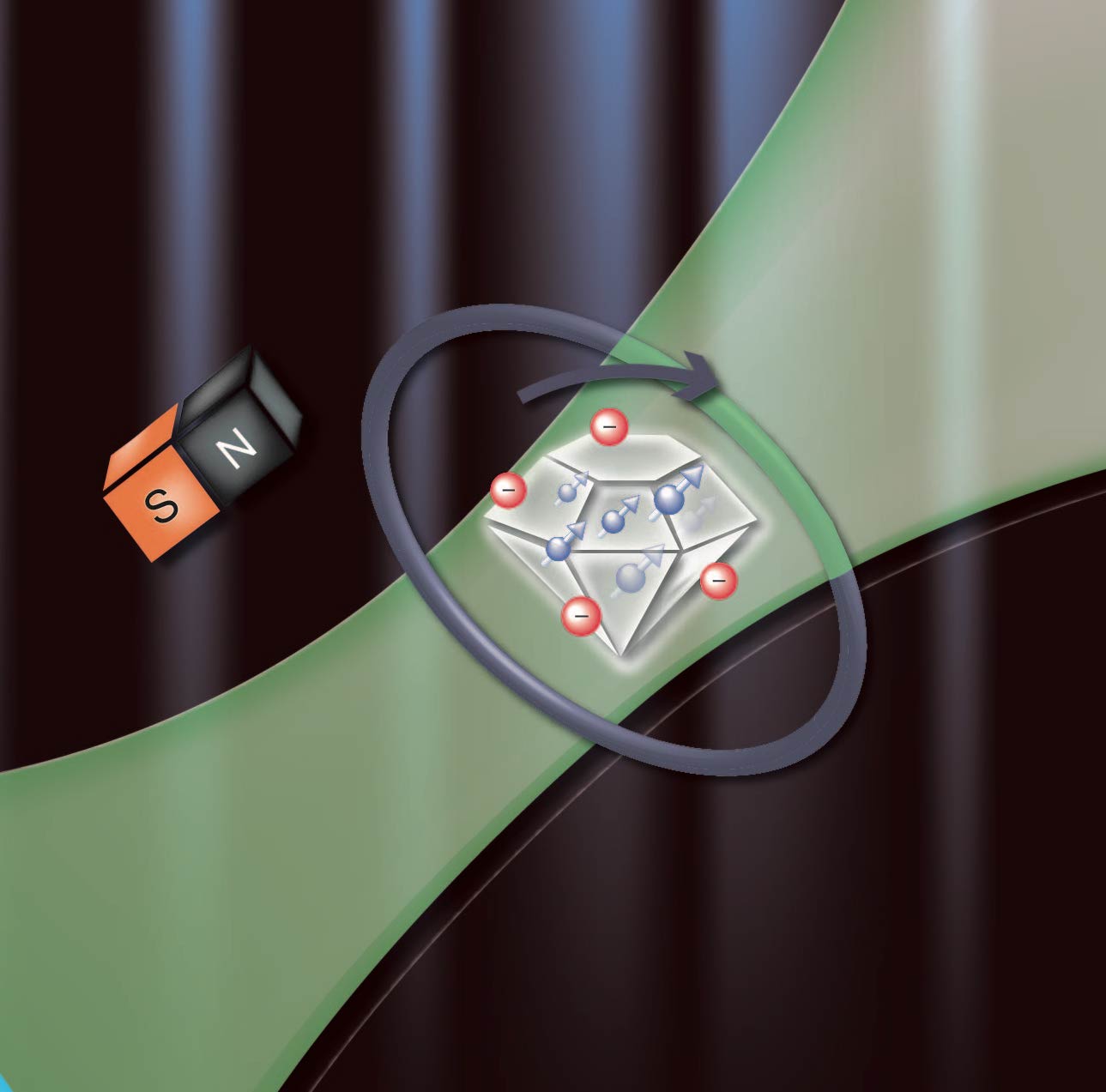Spin-Cooling of the Motion of a Trapped Diamond
There is still some fundamental questions about the complete description of how a physical system goes from the quantum to the classical world –the decoherence-. A way to answer those questions could be to put macroscopic objects, such as mechanical oscillators, in a quantum superposition state. This ambitious objective requires in the first place to control extremely precisely the motion of a mechanical oscillator.
Tremendous progress have been made in that way by using the mechanical forces that light can apply on massive objects. More recently, an alternative approach emerged, aiming to use the magnetism of electron spins. This idea came from the remarkable electrons properties found in some materials. For instance, the electrons localised on a specific default in diamond, the NV center, are well enough isolated so that we can efficiently control their spin state and thus their magnetism using a combination of laser and microwave fields. In principle, only one of those quantum magnets could allow to influence the motion of a macroscopic object, bridging the quantum and classical worlds. However, the experimental implementation of such a process is a formidable challenge.
For the first time, Researchers at the LPENS manage to act on the motion of a mechanical oscillator, a diamond levitating in an electrostatic trap, using the spin of the few billions of NV centers contained in the diamond. They could further demonstrate that the spins can be used to cool down the motion of the diamond. The road toward fundamental tests of quantum physics is still very long, but those results are an important step towards this goal.
To obtain those results, a setup has been put in place during nearly 5 years at the LPENS. It consists primarily in an electrostatic trap, a small metallic ring to which an alternative voltage is applied, allowing to levitate diamonds that are around 10 um in size. Once a diamond is trapped, the spin of around one billions of NV centers hosted in the diamond is maintained in a non-magnetic state by shining a green laser on the diamond. Then, applying a microwave field at a precise frequency allows to magnetize the spins. By doing so, NV centers act like tiny compasses and try to align with an external magnetic field generated by a fridge magnet placed next to the trap. This apply a torque on the diamond which changes its orientation. Optical detection of the diamond orientation allowed to observe this process, demonstrating the possibility to act on the diamond motion using the NV centers spin. Furthermore, it has been possible to exploit the spin magnetization dynamics coupled to the diamond orientation to create a viscous force allowing to cool down the angular motion of the diamond. Under a 1mbar pressure, at room temperature (300 K), a temperature of 80K has been observed.
Those results have been published in Nature (https://www.nature.com/articles/s41586-020-2133-z) the arxiv article is here (https://arxiv.org/abs/1905.11509)


Recent Comments